At St Mary’s College in Dundalk, Ireland, students are being encouraged to find motivation and thrive through creativity. In Ireland, before heading to University or specialised schools to enter the working world, students may choose to do a Transition Year (TY). During this time they develop personal responsibility and maturity, gain practical experience and make more informed decisions. Part of TY is also the creation and prototyping of a small-scale business idea.
This is precisely where Creative FLIP Learning Labs and Creative Spark, a local creative hub and co-working space, come into play. The newly opened FabLab and Print Studio usually cater for workshops with people of all ages as well as creative professionals, using the premises for their own creations. For the first time, TY students of St Mary’s College are prototyping their product ideas at Creative Spark, mentored by the hub’s professional team comprising Oscar Diaz, Carl McAteer, Gráinne Murphy and of course the overall support of Creative Spark, represented by Sarah Daly, Founder and Executive Director.
Images: sign post for Creative Spark, creative hub and FabLab in Dundalk
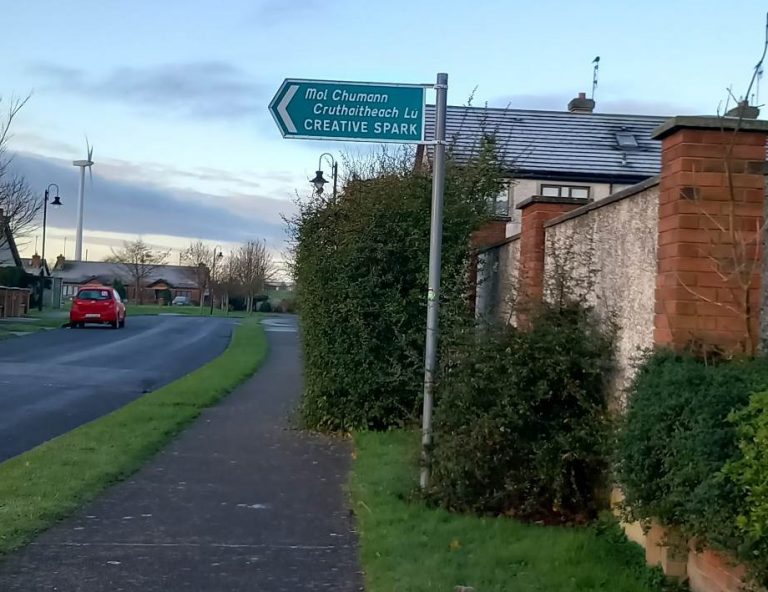
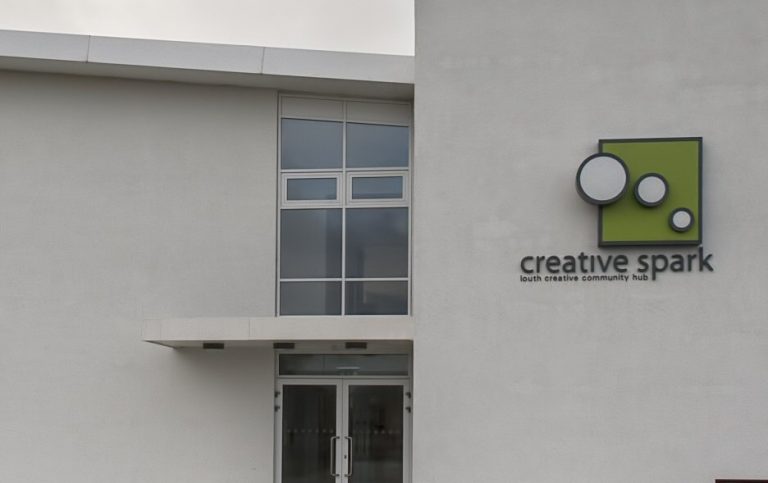
The team launched a call for participation among all TY students with over a hundred initially interested. The following exchanges and sessions resulted in 30 students being selected to participate in the experiment. Together with the school teacher in charge, Mr. Murphy, the group set their goal for this Learning Lab: Shaping the world around us, identifying real-life problems in the school environment and creating solutions with the help of design thinking, creative processes and technologies.
Image: Mr Murphy and Oscar Diaz at school
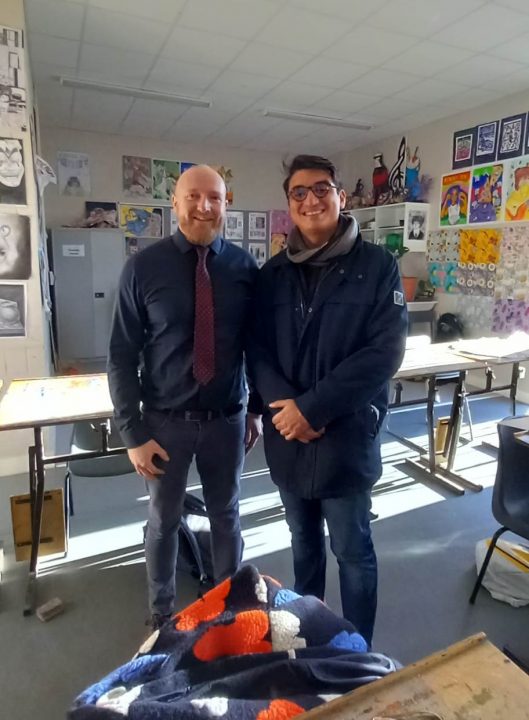
Soon six working groups had formed with product ideas ranging from jewellery making, textile design and AirPod innovation to a real upgrade of regular school lockers. Lastly, one group took on the challenge of documenting the entire process, creating a final video about their Learning Lab experience. When Creative FLIP came to visit in early December 2022, students were already well advanced in their projects, finalizing the first prototypes and they were very excited about presenting their innovations to us.
With their respective working groups Aedan and Isolde thought of a smarter way to use the large school lockers, maximizing their storage potential.
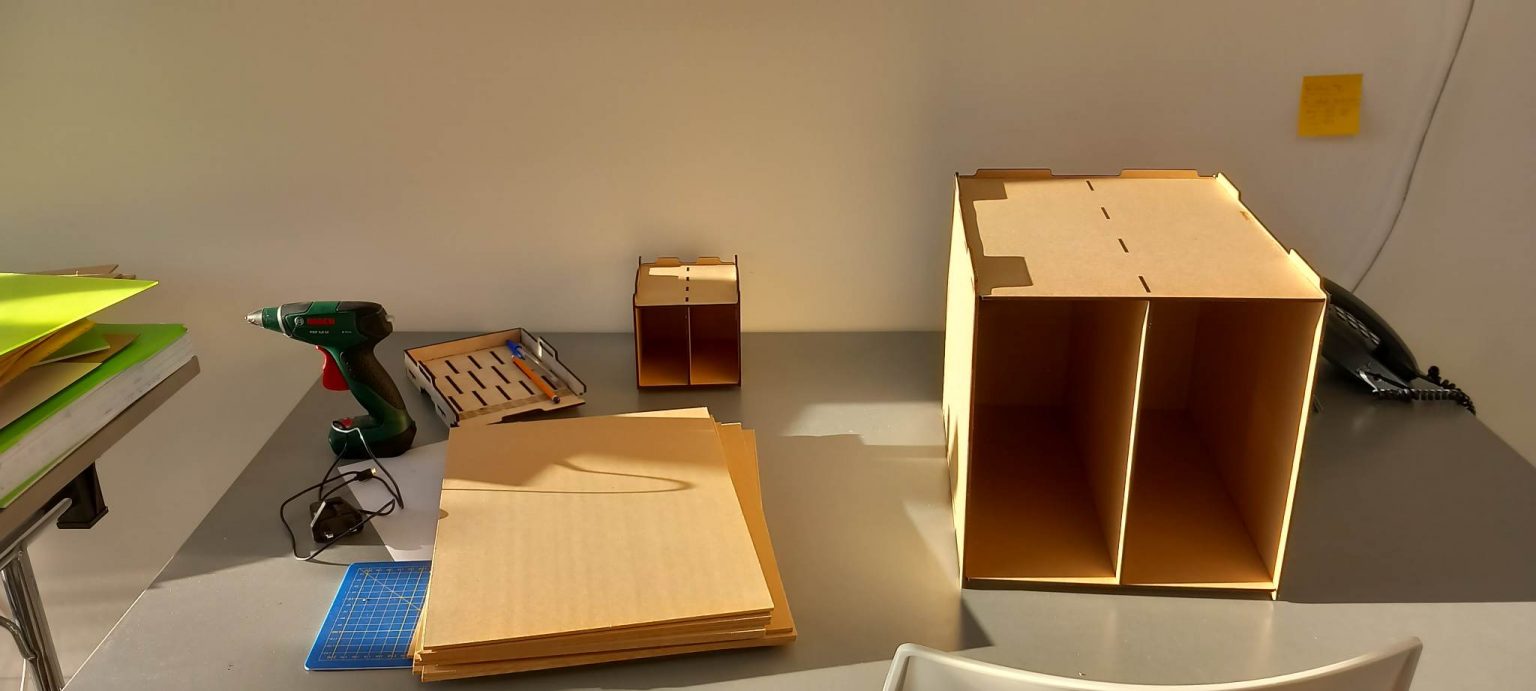
Image: Shelves for school locker
A simple but well-designed locker storage system and a magnetic wallet with clothes hangers, to be placed inside the lockers, will keep the currently messy school lockers nicely organized in the future. The main parts of both products have been produced with the help of a laser cutter and additional pieces were programmed and printed with the FabLab’s 3D printers.
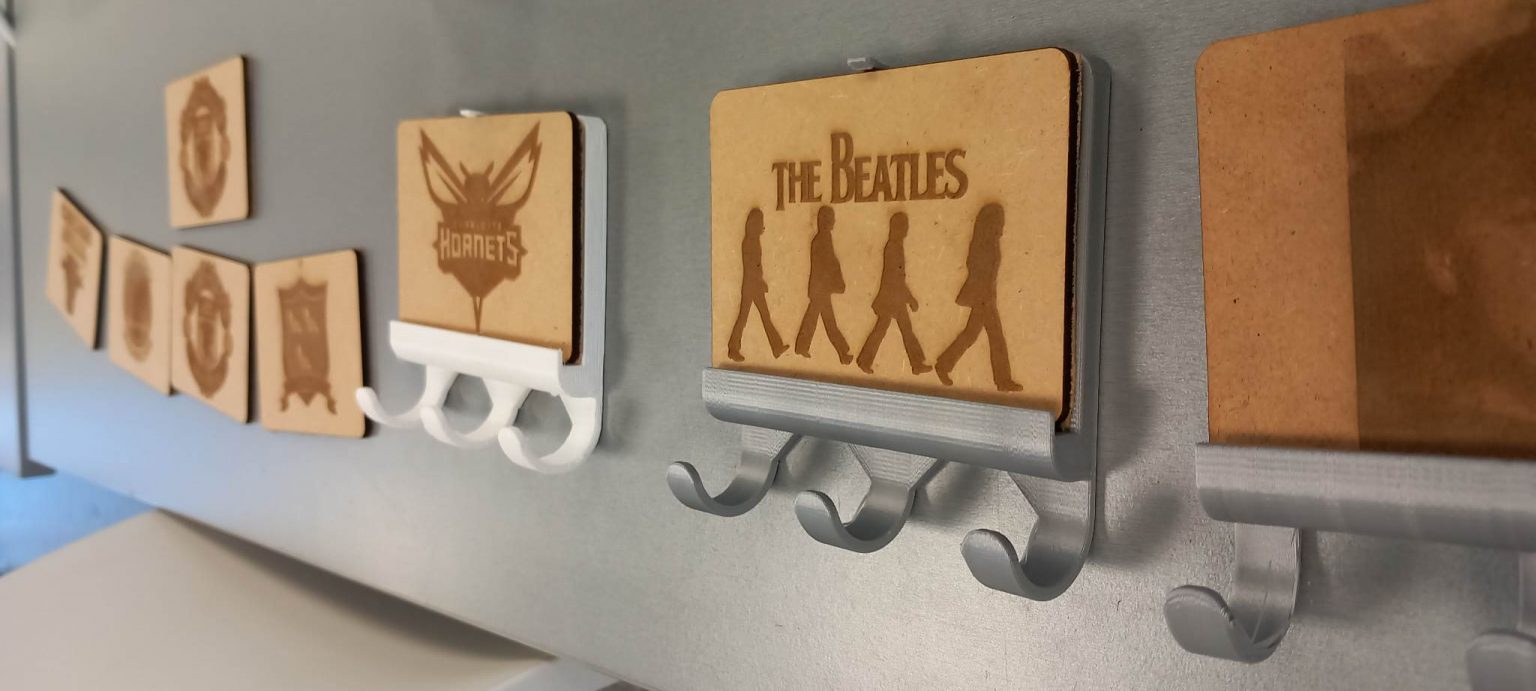
Image: Magnetic wallets and clothes hangers
On that day the school’s gymnastic hall functioned as the theatre, equipped with professional lights, sound system, a photographer in the room, video recording and of course a real stage.
At the next table, Alex, Edvards, Andrew, Conn and Ronan are working hard on an AirPod cleaning system for their favourite music devices and the right tunes on their way to school. Sam and Eoin who are in charge of the video production had been very inspired by all this creativity in the room and decided that the video filming task wasn’t quite enough for them. Being real business minds, they produced pocket-size round wooden badges that can be used as keychains or promotional gifts by companies. With the help of the laser cutter, the company logo can be applied to the badge which uses Near Field Communication (NFC) to send the company’s website or other internet links directly to customers’ phones when holding it close to the badge. And the boys are taking this seriously, already approaching local business owners with their product.
Moving on to the upper floor at Creative Spark, we find Gráinne working with two groups of girls on their very own textile prints applied to t-shirts, pullovers and tote bags. A second group is recycling and working with pieces of coloured glass, washed up at the nearby beaches, assembling different jewellery. Soon these will be sold to other students, the school community and local businesses at the annual “trade fair” during which TY students present their mini-business ideas and product models.
After the students have left the FabLab, heading back to school for the afternoon, we found time for a chat with the Creative Spark team.
If students succeed to sell their ideas, they may be able to return to the FabLab at a later stage to produce the ordered items. FabLab Technical Manager Carl explains to us that 3D printing is a cost-effective way of prototyping and producing smaller quantities, without having to invest in heavy machinery for a professional large scale production. Perfect for these motivated, creative and business-driven students, our creative professionals of tomorrow. This also goes in line with Sarah’s vison for Creative Spark. As Founder and Executive Director she wishes for the hub to offer affordable work space for artists and creatives in County Louth, clustering creative enterprises and providing a fruitful environment to work with and learn from each other in order to accelerate or start their businesses. Another element which supports this philosophy are art residencies that are regularly organized by and at Creative Spark, with the printing and ceramics studio high in demand. The newly created Fab Lab with its 3D printers and laser cutters is a great addition to the space.
What is your motivation to directly collaborate with a local school?
“We do have regular art classes and workshops with youngsters and one off classes at primary schools. Creative FLIP Learning Labs Program, however, gives us the chance to implement a more long-term project with the same students returning regularly, all the way from project ideation to production. Such a project is always a process and each student works differently, some are very focused while others need more support and guidance. Group dynamics play an important role in succeeding in co-creation and it needs time to experience and reflect on its different stages. The school also helps us with the logistics, providing a bus to bring the students to the hub for their sessions. And lastly, we successfully integrated this Learning Lab in the weekly curricula which means students have proactively agreed to participate. They feel engaged and motivated to achieve the goals we set together.
Many of your preparative workshops within this program took place at the school. Why did you choose it as venue, rather than the FabLab?
“The school and our contact person there, Mr. Murphy, have been extremely enthusiastic about the Learning Labs. Starting in a comfortable and known environment created a productive atmosphere based on trust. We also thought it important for our collaboration, to get to know the school’s premises and students’ learning environment as it is the starting point for this project. The goal is to create solutions for real-life problems in students’ daily lives. Additionally and with the help of Mr Murphy, our activities were designed to be complementary to existing classes such as Technology class taking place at the well-equipped classrooms at school.
Are there any systematic barriers and challenges you encountered while designing your Learning Lab?
“In our case, the collaboration went smoothly with no major problems. In general however, this depends very much on the school staff’s flexibility and willingness to cooperate. The lack of funds in public schools can also play a role and a general tendency of “separating” classes and topics, rather than using a multi-disciplinary approach for teaching. In our view, Transition Year is a very useful tool to provide students with that extra time and space to develop and explore future career paths. We found it particularly enriching to work with TY students having the time to guide them towards the realization of their own ideas and projects.
Are there any memorable moments throughout the project that you’d like to share?
“It was rewarding to see the diversity in students and how each of them found their role within the team. One boy on the “wallet-making group” was quite uninterested in the beginning, it was hard to get him motivated. But once he could feel his ideas were taken into account and the product took form, he became very engaged and proud of being part of that team. He took matters in his hands when the group needed a lead and stepped up for all of them.
Generally this has been a very positive experience and we are already replicating the program with another group of students, outside of their usual curricula. We are curious to see each of them develop along the way and ultimately succeed in achieving their personal goals.




